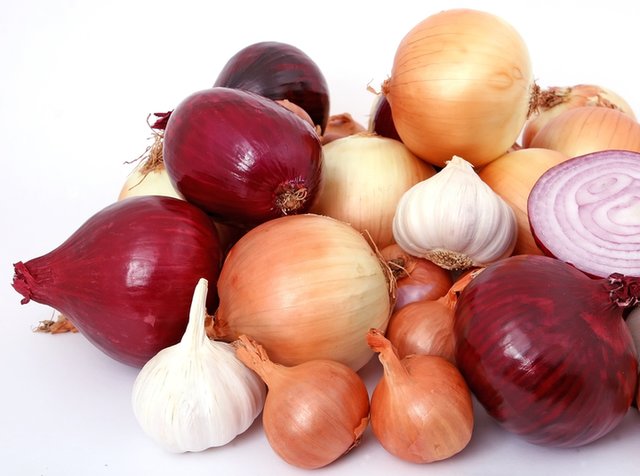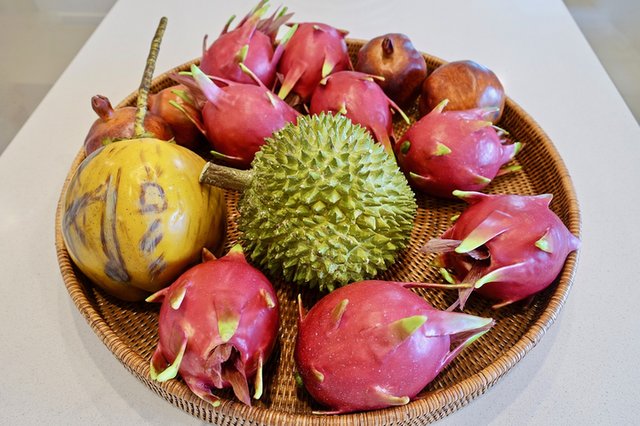HITTING
THE TOP NOTES
WITH HIAC
AROMA CHEMICALS

‘High Impact’ Aroma Chemicals (HIAC) are not universally defined, but the term is usually used to describe those recognisable flavours and fragrances that give a desired effect when used in very low concentrations. As well as contributing to the taste of a flavour, HIAC add considerably to its fragrance, making these flavouring ingredients appeal to our senses of both taste and smell.
It is generally accepted that HIAC for the flavouring industry share the following features.
- Low odour threshold. These chemicals are used at extremely low concentrations (not officially defined, but typically in the domain of ‘parts per billion’ [ppb]).
- Desirable character impact. Every HIAC has a powerful and recognisable character that is considered desirable to the human palate.
- Regulatory approval. Clearly, any chemical must be approved for its intended use. For flavours, this generally means that they should have FEMA GRAS (Flavour and Extracts Manufacturers Association – Generally Regarded as Safe) status.
- Stability. The compound must have a sufficiently long shelf-life for it to be useful as a flavouring.
WHAT IS AN HIAC?
Demand for HIAC has been driven by increased consumer sophistication in the market for flavours, and delivered by improvements in the techniques used to identify characterful molecules.
Speaking to FOOD Horizons last month, Stewart House, PhD, General Manager at Endeavour Chemicals (whose products are globally distributed by Treatt), shared his impressions of technical developments over the past 30 years he has spent in the field.
“The addition of a HIAC to a flavour formulation can give any particular flavour a ‘lift’ or added ‘wow factor’”, he said. “The prime focus in recent times has been to produce a consistent odour profile but married with an expected general increase in assay purity. The challenge has been to keep the characteristics of the odour whilst removing minor by-products and impurities. The routine use of GCMS on all products, especially during process development, is now a crucial aspect of product profile control, to enable the effect of very low-level impurities to be assessed.”
For many years, the industry was focussed on developing methods that could efficiently and cost effectively – in an industrial setting – create synthetic compounds that mimicked nature.
“We constantly monitor the chemical and food industry literature to look for new methodologies to apply to older products,” explained Endeavour Chemicals’ Dr House. “An obvious challenge is to improve the process, reduce cost but keep the odour profile consistent. There is a continued drive to take cost out of a process to make a product more accessible, especially in developing Asian, South American and African markets. Many economies are unable to support the use of more expensive – and often less consistently pure – natural equivalents. Well established HIACs, that have been the cornerstone of the flavour industry for many years, continue to find new applications as the developing markets continue to open up.”
MAKING AN IMPACT
However, in 2008, new European legislation2 regarding the classification of ‘artificial’ and ‘natural’ flavours and fragrances drove a shift towards natural versions of existing artificial compounds. The new European legislation allowed products to be labelled as ‘natural’ if they were either isolated from a natural source, or manufactured via a biotechnology or fermentation processes. This has led to a fascinating field of R&D, which necessitates a clear understanding of the metabolic pathways required to produce natural compounds, and the roles of various enzymes needed to produce the desired products.
One recent example of this biotech revolution is the Technische Universität München’s work on aroma glycosides.3 The chemical synthesis of glycosides is well established but, aside from lacking a ‘natural’ label, synthetic production is a labour-intensive task that involves multiple protection and deprotection steps to reduce the formation of unwanted side products. The research group’s identification of numerous biocatalysts enabled the establishment of the first biotechnological process for the production of furanone ß-D-glucosides, with promising applications as HIAC.3
In the absence of a universal definition for HIAC, it is difficult to get an estimate of the proportion of commercially available high impact flavourings that are considered ‘natural’. Nevertheless, as consumer demands for natural products continue to grow, and as many companies place an increased focus on labelling their products with ‘no artificial flavours’, it seems safe to assume that natural flavourings – including natural HIAC – have a ripe future in many sectors.
NATURAL IMPACT
Manufacturing HIAC requires specialist skills to carry out the chemistry and/or biotechnology required. In addition, it requires the ability to contain the powerful odours of the product. As already noted above, these compounds are detectable at concentrations of parts per billion, so even a small leak at any point in the production or storage process could have a significant impact on the surrounding area.
“We must never become complacent when making or handling the HIACs – even a small lapse in containment can have an environmental impact,” declared Dr House. “Accidental release of a food grade thiol or sulphide, which on dilution may be quite pleasant, could cause unfamiliar and very unpleasant sensory responses that automatically raise our state of awareness to something that may cause us harm.”
These requirements entail heavy investment in containment and abatement facilities, alongside the equipment and expertise required for manufacturing the chemicals. This goes some way to explaining why many HIAC are relatively expensive, as the high costs reflect the difficulties associated with their manufacture and handling. However, it is broadly accepted that these high costs are usually offset by the very small volumes that need to be used. Market forces will generally ensure that HIAC are available at prices that allow the flavourist to add value through their use.
CONTAINMENT
There is more pressure than ever for companies to demonstrate a sustainable approach to manufacturing. As our fragile world teeters on the balance, now is surely the time to consider the impact of our every action and creation on the environment.
An obvious point in favour of HIAC is the fact that they need remarkably small volumes to take effect, meaning a smaller manufacturing footprint, reduced ‘food miles’ for transportation up the supply chain, and potentially less production waste from the manufacturing process. Added to this is a growing trend for green chemistry, and the aforementioned growth of biotechnology, both of which might be expected to add to the environmentally friendly credentials of many modern HIAC. Such advantages have led at least one company to claim that its HIAC “unite sustainability, variety and power”.4
Used correctly, HIAC offer a cost-effective, efficient and potentially more sustainable means of hitting our senses with a delightful assortment of flavours and aromas.
SUSTAINABILITY
- Rowe D. More Fizz for Your Buck: High-impact Aroma Chemicals. Perfumer & Flavorist 2000;25:1-19. https://media.allured.com/documents/0032.pdf
- Regulation (EC) No 1334/2008 of the European Parliament and of the Council of 16 December 2008 on flavourings and certain food ingredients with flavouring properties for use in and on foods.
- Effenberger I, Hoffmann T, Jonczyk R et al. Novel biotechnological glucosylation of high-impact aroma chemicals, 3(2H)- and 2(5H)-furanones. Science Reports 2019;9:10943 https://doi.org/10.1038/s41598-019-47514-9
- Symrise. High impact molecules – in it to win it. Symrise corporate website, accessed September 2020. https://www.symrise.com/scent-and-care/aroma-molecules/#sustainable-success
References
ABOUT THE AUTHOR
Sarah Harding, PhD, is a specialist in scientific communications, with 25 years of experience in the speciality chemicals and pharmaceutical sectors.

Flavourists used to working with the conventional sixteen-note flavour wheel should be mindful that the wheel needs to be adapted when adding HIAC to their products.1 These chemicals are generally used to provide ‘top notes’ – that is, those flavours and aromas that hit the senses quickly and then dissipate. Therefore, an adapted flavour wheel for HIAC has no spokes for minty, butter and intensely floral flavours. Instead, those spaces are filled with extended tropical and blackcurrant fruity flavours, a greater range of meaty tones, and a division of the allium into both onion and garlic. Tropical flavourings are considered one of the most important areas for HIAC.1
Notable examples include tropathiane, 2-methyl-4-propyl-1,3-oxathiane, a sulphur compound present in passion fruit and durian that provides a superb tropical flavouring, and 2-methoxy-4-methyl-4-butanethiol, a key ingredient for blackcurrant, which is a very popular flavour in Europe, associated with health food products as well as alcoholic drinks. Flavourings such as these are added at concentrations of around 1 to 3 ppb, truly making a high impact in return for miniscule additives.
At full concentrations, HIAC are often unpleasant. However, when they are diluted by experts to just the right strength, they can bring something special to your product. Many chemists will know that dimethyl sulphide can smell like rotten cabbage, but when used at extremely low concentrations it can offer a tropical fruity tone. Similarly, highly concentrated thiolimonene smells like burning rubber, but once properly diluted it provides a delicious aroma of grapefruit.
RE-INVENTING THE WHEEL

An adapted flavour wheel for HIAC separates the allium into onion and garlic.
(Image by Shutterbug75 from Pixabay)

You might be surprised that, at very low concentrations, dimethyl sulphide can offer a tropical fruity tone.
(Image by Siggy Nowak from Pixabay)
(Image by Blandine JOANNIC from Pixabay)





